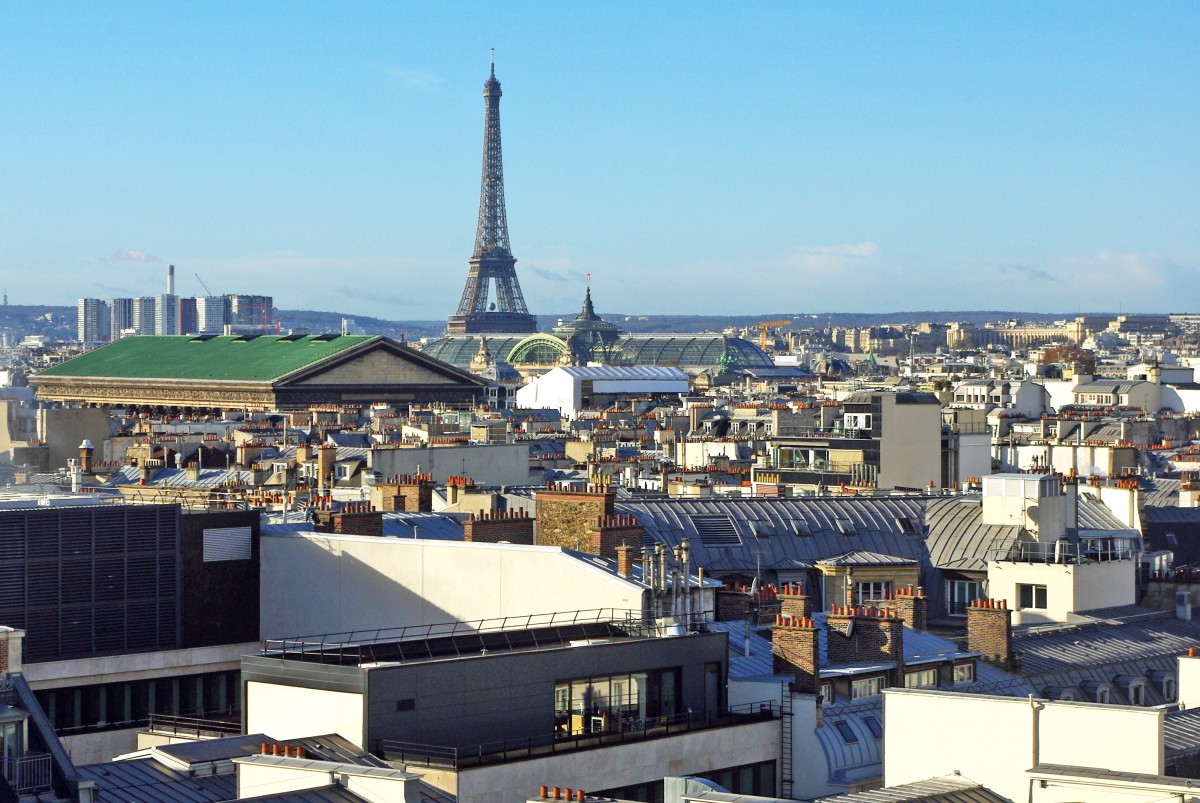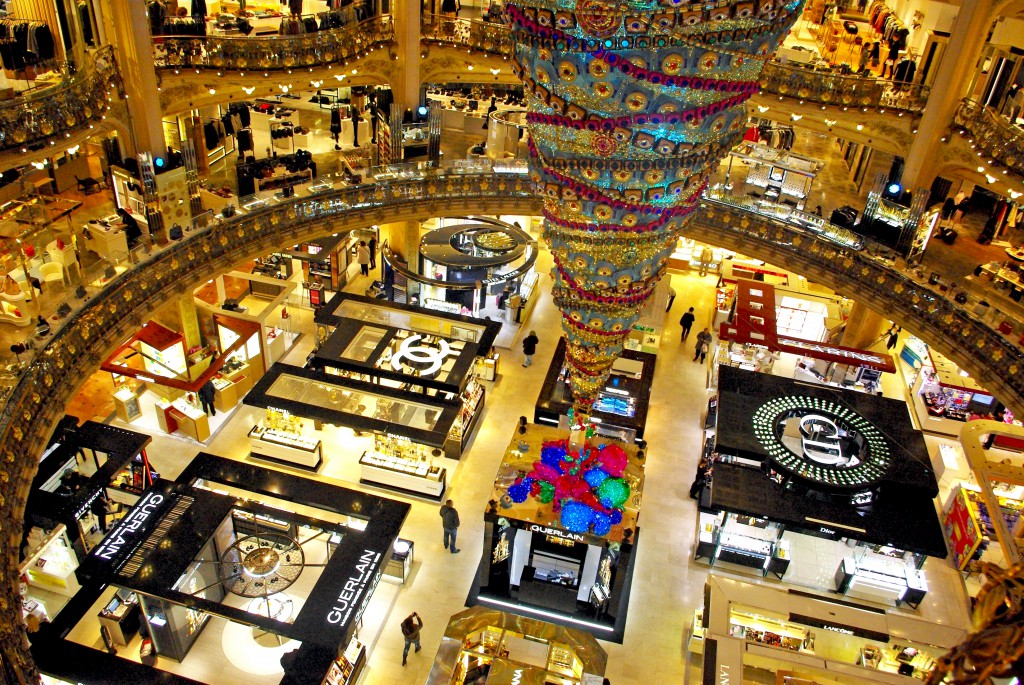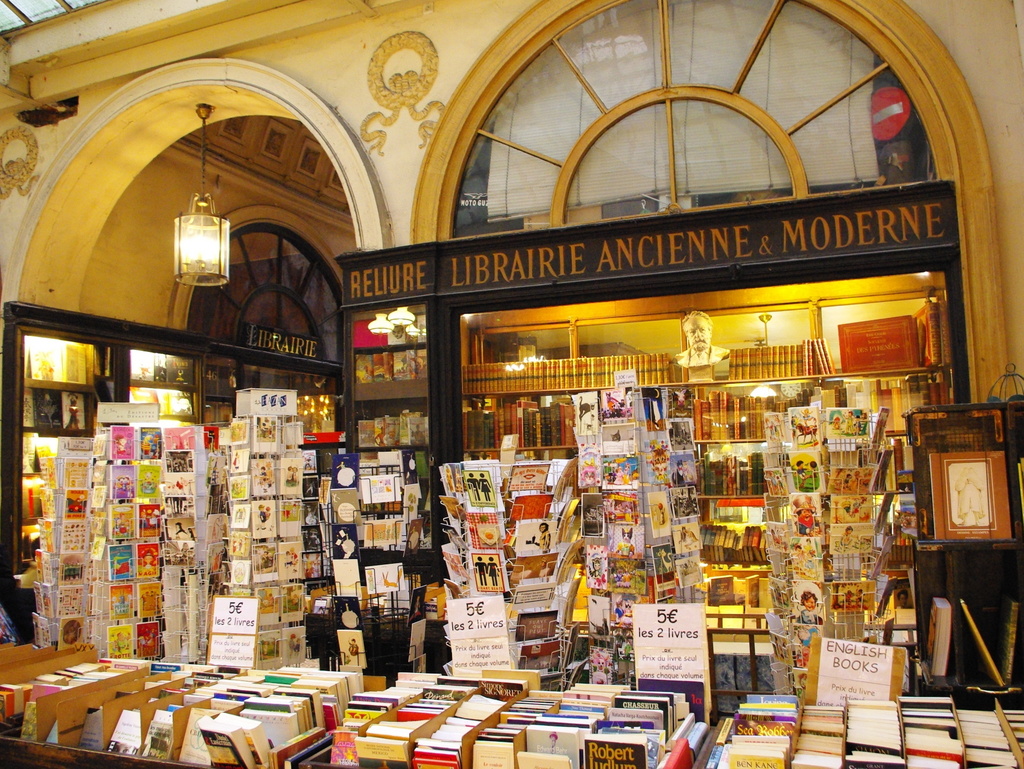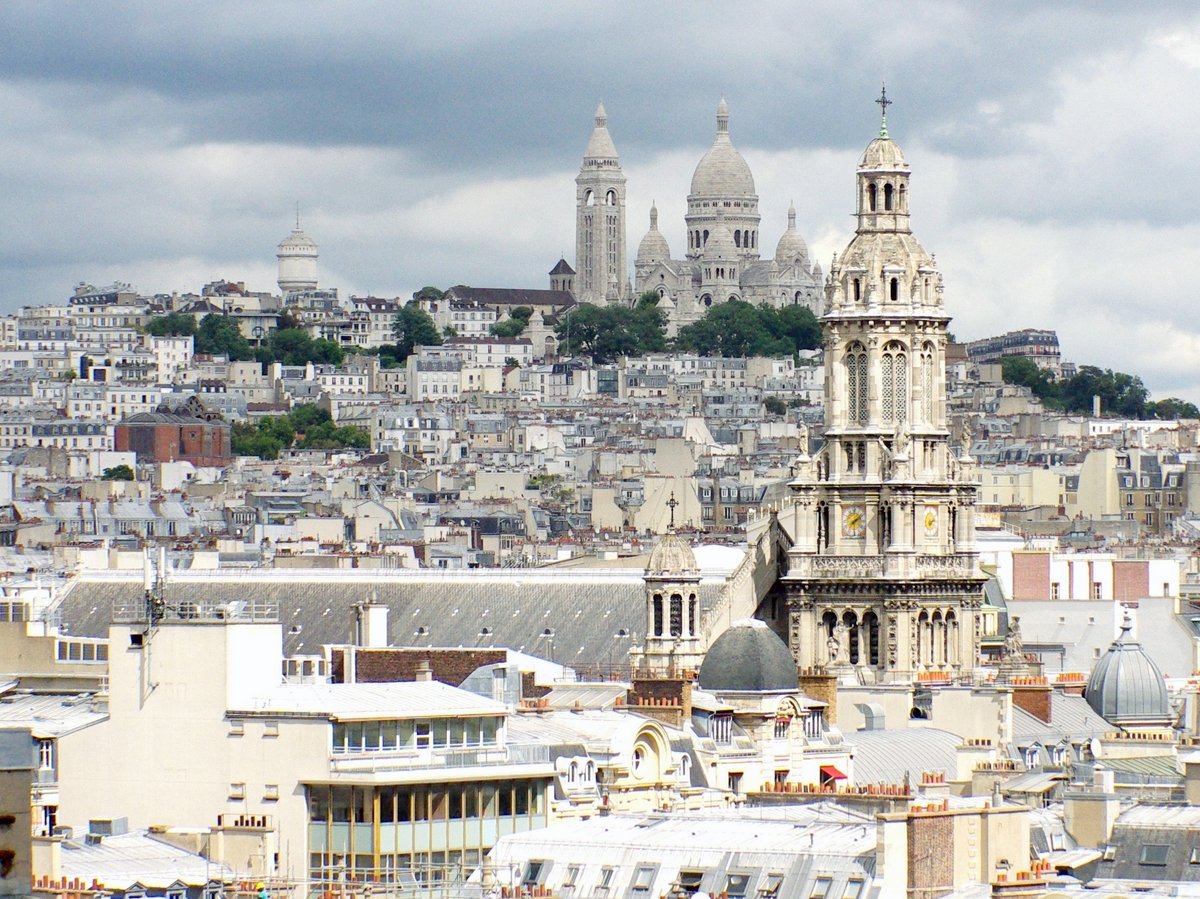The Ninth arrondissement is a crossroads district. It is one of the most frequented places in the capital, both for Parisians and tourists. Centred on the extravagant Opéra Garnier, the 9th arrondissement is bustling with activity as this is one of Paris’ major shopping areas. The Grands Boulevards are home to the most fabulous department stores in the country without forgetting the head offices of several multinational firms.
A few words about the 9th arrondissement
![9th arrondissement of Paris © ThePromenader - licence [CC BY-SA 3.0] from Wikimedia Commons](https://frenchmoments.eu/wp-content/uploads/2014/10/Paris_9e_arr_jms.gif)
The Ninth arrondissement of Paris (le neuvième arrondissement) is situated on the right bank of River Seine and is centred on the Grands Boulevards and Opéra Garnier. The district covers an area of 2.18 km2 with a population of 60,120 (2011 census).
Along with the 8th and 2nd arrondissements, the district is home to a great number of multinational firms and banks, making it one of France’s premier business districts behind La Défense.

The main touristic monument is Opéra Garnier. There are a number of museums in the 9th arrt, one of the most famous being the Musée Grévin, a wax museum similar to London’s Madame Tussauds.
The ninth arrondissement is home to two giant French department stores: Printemps Haussmann and Galeries Lafayette, both situated on Boulevard Haussmann.
The 4 districts of the 9th arrondissement
![The 4 districts of the ninth arrt © Paris 16 - licence [CC BY-SA 4.0] from Wikimedia Commons](https://frenchmoments.eu/wp-content/uploads/2014/10/The-4-districts-of-the-9th-arrt-©-Paris-16-licence-CC-BY-SA-4.0-from-Wikimedia-Commons.jpg)
The 9th arrondissement is composed of four districts:
- Saint-Georges district is the district of writers and artists. For some years now, it has been enjoying a revival. Several theatres perpetuate an already old tradition. There is also the beautiful Place Saint-Georges and the Museum of Romantic Life.
- The prestige of the Opéra Garnier and the business world give the Chaussée d’Antin district a unique place among European capitals. The department stores, banks, insurance companies and grand hotels attract a cosmopolitan crowd. The tradition of the 19th century Grands Boulevards lives on in the famous cinemas and cafés.
- The heart of the Parisian art trade is concentrated in the south of the Faubourg Montmartre district, at the Hôtel Drouot. Antique dealers, galleries and specialist bookshops attract art lovers. The Grévin Museum and the Folies-Bergère remain renowned among tourists.
- A certain social balance, representative of historical Paris, can be found in the Rochechouart district, which was urbanised in Haussmann’s time. If the north of the district appears more residential, the south is more popular.

Facts and figures
The Ninth arrondissement of Paris covers an area of 2.18 km2 with a population of 60,026 (2019).
It is the 7th richest among the 20 arrondissements of Paris, and its average median tax income is double that in France.
The minimum altitude is 33 m above sea level and the maximum altitude is 69 m.
Metro lines and stations in the 9th arrondissement
The ninth arrondissement is particularly well served by public transport, as it has 19 metro stations located within or bordering on its territory:
- 2 (stations: Barbès – Rochechouart, Anvers, Pigalle, Blanche et Place de Clichy).
- 3 (stations: Opéra, Havre – Caumartin et Saint-Lazare).
- 4 (stations: Barbès – Rochechouart).
- 7 (stations: Opéra, Chaussée d’Antin – La Fayette, Le Peletier, Cadet et Poissonnière).
- 8 (stations: Bonne-Nouvelle, Grands Boulevards, Richelieu – Drouot, Opéra et Madeleine).
- 9 (stations: Bonne-Nouvelle, Grands Boulevards, Richelieu – Drouot, Chaussée d’Antin – La Fayette et Havre – Caumartin).
- 12 (stations: Saint-Lazare, Trinité – d’Estienne d’Orves, Notre-Dame-de-Lorette, Saint-Georges et Pigalle).
- 13 (stations: Saint-Lazare, Liège et Place de Clichy).
- 14 (stations: Madeleine, Saint-Lazare).
- RER A (stations: Auber).
- RER E (stations: Haussmann Saint-Lazare).
![Metro lines and stations in the ninth arrondissement of Paris © Hmaglione10 - licence [CC BY-SA 4.0] from Wikimedia Commons](https://frenchmoments.eu/wp-content/uploads/2014/10/Metro-lines-and-stations-in-the-9th-arrondissement-of-Paris-©-Hmaglione10-licence-CC-BY-SA-4.0-from-Wikimedia-Commons.png)
Where to stay in the 9th arrondissement?
Hotels in Paris vary from stunning luxurious places like the Ritz and the Meurice to much simpler hotels in charming older parts of the city. However, due to its central location, you will find the level of prices of all types of accommodation quite high in the 9th arrt. Depending on your budget, might want to find cheaper accommodation further away from the hyper centre of Paris!
Click on this link for a list of accommodations in the 9th arrondissement or browse the map below:
Shopping in the 9th arrondissement
Of all the arrondissements in Paris, the 9th is arguably the most commercial.
The 9th arrondissement is a great place to shop thanks to the presence of the two largest department stores in Paris, Galeries Lafayette and Printemps. Under their Art Nouveau glass roofs, the Parisian department stores belong to the legend of upmarket shopping.

- Galeries Lafayette has 6 floors where you can find absolutely all fashion products: designers, haute couture, national brands, jewellery, perfume, accessories, shoes… To complete the commercial offer, the department store has been extended on the other side of Boulevard Haussmann: Lafayette Maison, Lafayette Homme and Lafayette Gourmet.
- Le Printemps, founded in 1865, is divided into three shops: Printemps Mode, Printemps Beauté/Maison and Printemps Homme.
The shopping streets also include the rue de Chaussée d’Antin, the rue de Provence, the shopping galleries of the Passage du Havre and the Gare Saint-Lazare.
The further east you go (rue Cadet, rue Poissonnière or rue des Martyrs), the less expensive the shops.
Main places of interest in the 9th arrondissement

With Opéra Garnier as its ‘star’ monument, the 9th arrondissement features a number of museums and other places of interest:
- Galeries Lafayette and the Art Nouveau cupola
- the elegant square of Place Saint-Georges
- covered passages of Passage Jouffroy and Passage Verdeau
- Place Edouard-VII is a picturesque pedestrian square not far from the opera
- Rue Laffitte and the perspective to Sacré-Cœur de Montmartre




Churches in the 9th arrondissement
The 9th arrondissement has three churches that are worth mentioning:
- Sainte-Trinité de Paris – With its 65-metre high bell tower, the neo-Renaissance style church dates from the 1860s, during the great works of Baron Haussmann.
- Notre-Dame de Lorette – With its façade in the shape of an ancient temple, Notre-Dame-de-Lorette is a neo-classical church built between 1823 and 1836. The nave of the church is the most colourful in Paris.
- Saint-Eugène-Sainte-Cécile – Completed in 1855, the church of Saint Eugene is in the neo-Gothic style. Iron and cast iron were used for the first time in Paris for the columns, arches, arches and the gallery. The interior is magnificent with its polychromy and coloured stained glass windows.

![Notre-Dame-de-Lorette © Pline - licence [CC BY-SA 3.0] from Wikimedia Commons](https://frenchmoments.eu/wp-content/uploads/2014/10/Notre-Dame-de-Lorette-©-Pline-licence-CC-BY-SA-3.0-from-Wikimedia-Commons.jpg)
![Saint-Eugène-Sainte-Cécile Paris © Cmcmcm1 - licence [CC BY-SA 4.0] from Wikimedia Commons](https://frenchmoments.eu/wp-content/uploads/2014/10/Saint-Eugène-Sainte-Cécile-Paris-©-Cmcmcm1-licence-CC-BY-SA-4.0-from-Wikimedia-Commons.jpg)
Museums in the 9th arrondissement
- Musée Grévin (a wax museum on the model of Madame Tussauds in London)
- Museum of Romantic Life, a museum in the Scheffer-Renan mansion
- Musée Gustave-Moreau, in the former studio of the symbolist painter Gustave Moreau.

Concert and cabaret venues in the 9th arrondissement
- Olympia Hall, the oldest music hall in Paris still in operation.
- Casino de Paris, a Parisian performance hall inaugurated in 1880.
- Folies Bergère, a cabaret music hall where Josephine Baker caused a sensation in 1926 by dancing in a costume consisting of a skirt made of a string of artificial bananas (and little else).
- The ninth arrondissement is also home to a great number of theatres: Théâtre Edouard VII, théâtre des Nouveautés, théâtre Mogador, etc.
Pin it for later!
Liked what you read? Pin it on Pinterest:






Thank you for such interesting information about Paris and all of France.
You’re welcome Cecelia!
Returning to Paris in June and hope to avoid American Hospital this time! In 2017 I was a patient there when Macron won the eland today, 5 years later, he wins again.
Oh definitely, you don’t want to visit the American Hospital a second time! Have the best stay in Paris in June!!
Rue des Martyrs ! I know it winds up into the 18e arrondissement, but it starts right behind Notre-Dame de Lorette. I love, love, love this street with all the shops and cafés. Le Meringaie is a must!
Thank you Heather for the tip! 🙂